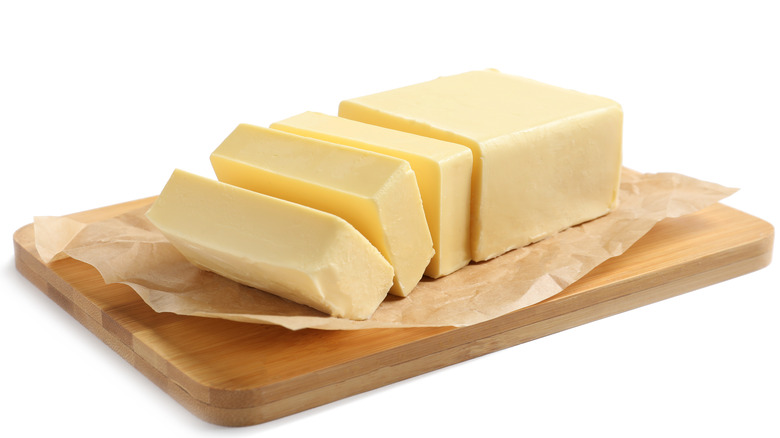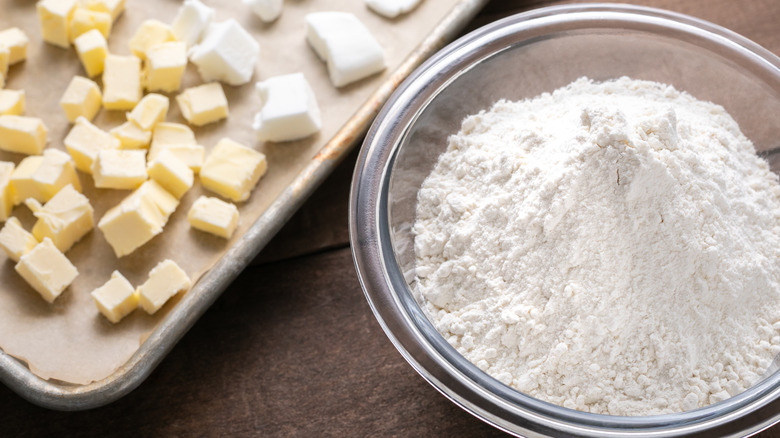The Real Reason Your Butter Temperature Matters For Pastry
Butter is god's gift to baking. It's the reason pastries are flaky and tender — the force that can leave cakes moist and memorable. When butter is folded into dough, it can even act as a rising agent in laminated pastry. All this comes down to the fact that butter is a shape shifter: Solid at 35 F and a fatty liquid at 94 F, and it's this shape-shifting quality that determines the outcome of the product we're trying to make (via King Arthur Baking Company).
All recipes that have butter as an ingredient will specify exactly what state the butter should be in as it is added to other ingredients. In many cases, it is recommended that butter be between 68 F to 72 F, which is when the block might have gone a bit soft, but still holds its shape. If you poke it, the butter won't feel squishy or look melted. Unless you live in a super-hot environment, getting your butter to this state (a.k.a. "room temperature") might need between 30 to 60 minutes (via Kitchn). This type of butter works best with some cakes and cookies because it takes in more air than rock solid butter while it is being creamed, leaving the end product fluffier and more tender (via Food Network).
Butter can be manipulated to achieve different effects
There is a time and a place for cold, rock hard butter too, and that's when you're looking to make flaky dough for things like pie crusts, biscuits, puff pastry — and if you have time on your hands — croissants. Very cold chunks of butter resist being assimilated into dough (which should also be cold), so when the pastry goes into the oven, the butter melts, and the liquid in butter evaporates, creating chambers and layers that add lift to pastry (via King Arthur Baking Company).
There's even room in baking for melted butter, which Food Network says adds richness to brownies, cakes, and cookie dough, leaving them dense and crisp. Melted butter has the added advantage of being easy to work with, so you aren't likely to need the help of gadgets like stand mixers to bring your dough together.
With all the fat options available in baking today (think oil, shortening, and margarine) — we won't blame you if you wonder just what makes butter a more desirable option. King Arthur Baking Company says it all comes down to the way nature built butter — it is about 80 percent fat, but also has about 20 percent water. Oil, by contrast, is 100 percent oil. And when the 20 percent of water evaporates, it also creates pockets. Another reason is taste — nothing can replicate the rich mouthfeel of butter, and when you have something as perfect as that, no one really wants to try.

